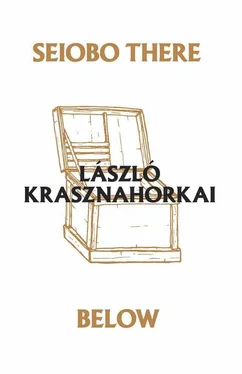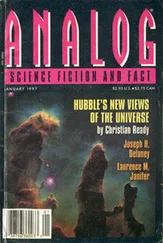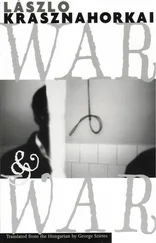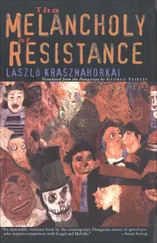Laszlo Krasznahorkai - Seiobo There Below
Здесь есть возможность читать онлайн «Laszlo Krasznahorkai - Seiobo There Below» весь текст электронной книги совершенно бесплатно (целиком полную версию без сокращений). В некоторых случаях можно слушать аудио, скачать через торрент в формате fb2 и присутствует краткое содержание. Год выпуска: 2013, ISBN: 2013, Издательство: New Directions, Жанр: Современная проза, на английском языке. Описание произведения, (предисловие) а так же отзывы посетителей доступны на портале библиотеки ЛибКат.
- Название:Seiobo There Below
- Автор:
- Издательство:New Directions
- Жанр:
- Год:2013
- ISBN:978-0811219679
- Рейтинг книги:4 / 5. Голосов: 1
-
Избранное:Добавить в избранное
- Отзывы:
-
Ваша оценка:
- 80
- 1
- 2
- 3
- 4
- 5
Seiobo There Below: краткое содержание, описание и аннотация
Предлагаем к чтению аннотацию, описание, краткое содержание или предисловие (зависит от того, что написал сам автор книги «Seiobo There Below»). Если вы не нашли необходимую информацию о книге — напишите в комментариях, мы постараемся отыскать её.
Seiobo — a Japanese goddess — has a peach tree in her garden that blossoms once every three thousand years: its fruit brings immortality. In
, we see her returning again and again to mortal realms, searching for a glimpse of perfection. Beauty, in Krasznahorkai’s new novel, reflects, however fleetingly, the sacred — even if we are mostly unable to bear it.
shows us an ancient Buddha being restored; Perugino managing his workshop; a Japanese Noh actor rehearsing; a fanatic of Baroque music lecturing a handful of old villagers; tourists intruding into the rituals of Japan’s most sacred shrine; a heron hunting.… Over these scenes and more — structured by the Fibonacci sequence — Seiobo hovers, watching it all.
Seiobo There Below — читать онлайн бесплатно полную книгу (весь текст) целиком
Ниже представлен текст книги, разбитый по страницам. Система сохранения места последней прочитанной страницы, позволяет с удобством читать онлайн бесплатно книгу «Seiobo There Below», без необходимости каждый раз заново искать на чём Вы остановились. Поставьте закладку, и сможете в любой момент перейти на страницу, на которой закончили чтение.
Интервал:
Закладка:
Everything went back to the definition of the Holy Trinity, practically the fate of all Eastern Christianity rested on this, indeed even Christianity itself rested upon the extraordinary concerns surrounding this fundamental question; as a rule, things don’t usually occur in this way, because as a rule the fundamental questions only crystallize later, only later is it usually clear what is being debated, why certain principles are being put forward, why the quarrels, the schisms, then the heaps of massacred bodies; the questions occur generally speaking later; but this was not the case of the Christian religion of love, as here the discussions had been taking place since the fourth century, and finally it was because of this that the theological schism, made official back in 1054, occurred, although there actually had been an Eastern and Western Church since the creation of the Eastern Roman Empire, there was Rome and Constantinople; and this Eastern Church, to speak of only that now, this Constantinople, was none too reassured, neither at the time, nor later on, when an ultimate decision was reached as to the nature of the Almighty, the Christ, and the Holy Spirit, and what there even was in this realm that surpassed the human, because they had to make up their minds — on every occasion, once and for all — six times; the problem was that human beings — that is the Fathers of the Church, the patriarchs, metropolitans, bishops, priests of the synod, in a word the local and universal synods, and so on, the great Saint Athanasios, Saint Gregory of Nazianos, Saint Basil the Great, and Saint Gregory of Nyssa — had to make a decision in a question that clearly surpassed not only their extraordinary talents but their human capacities, because when the time came to say what was the relation between the Lord, the Christ, and the Holy Spirit, everything came into it: and there were the subtle and heretical distinctions of the most outrageous versions, heresies so subtle that it is not easy to comprehend the large quantity of blood, symbolic or real, that was periodically shed due to one or another miniscule detail of the so-called theological question, that was shed, therefore, because of the teaching of the Holy Trinity: for there were those who argued for the Lord alone, and there were those, too, who acknowledged the uniqueness and primacy of Christ alone, then there were those who argued for the precedence of the Lord and Christ together, but there were finally those who advised for the equal standing of all three, that is of the Lord, the Christ, and the Holy Spirit, and this school of thought was finally victorious, together with that peculiar formation which became the central tenet of Christian belief: the single essence of the Father but in three forms, so that there followed afterward, for those who can even understand it, the so-called filioque controversy, i.e., as to whether the Holy Spirit originated only from the Father, or from the Son, and this split the Christian faith into two once and for all, and there arose the Orthodox world of belief — this colossal mysterious Byzantine Empire — which remained for a thousand years even after the great collapse of the West, where there reigned a life subordinated simultaneously to the desire for pomp and sensual hunger, and additionally, with equal justification, a life subordinated to a theologically driven faith; and where the essential, earth-shattering
attack on the entire Orthodox congregation following the Seventh Ecumenical Council no longer threatened this fundamental tenet of faith, which of course did not at the same time mean that the question was resolved, the question was not resolved; every decision concerning the Lord, as well as that of the relation between Him and the incarnation as Christ and, respectively, between Him and the Holy Spirit, remained in an unapproachable obscurity, or looking at it from the viewpoint of the later materialist heretics, on the terrain of a fairly indefensible logical failure, where only deference to authority and faith itself was of assistance, that is, as for the most profound saints of the Church, from St. John Chrysostom of the Golden Mouth to St. Sergius of Radonezh, the question of the nature of the Trinity never was problematic, it was and remained a problem only for the others, that is for the world, for all those who were not capable — since they were not capable of what the saints were — of seeing the embodiment of the Creator, of seeing the mystery of the Trinity, of not questioning but experiencing, experiencing for themselves and perceiving the extraordinary concentration of the created and the non-created world, the godly atelier and the supremacy — stunning, miraculous, inexpressible in words — of the strength of creation; allowing the decisions to be rendered upon them, through them, through their saintly beings, by the Church, that is the Holy Synod, as to what the tenet of faith was that could no longer be cast into doubt concerning bodily manifestation, concerning the mystery of the Trinity and its depiction, because it could be depicted, they concluded after some debate — a debate that did not forego destructive resolve — yes, they concluded that it could be depicted, yes, Christ the Son, the Embodiment of the Lord, it could be represented — as the order of the Ecumenical Council of One Hundred Articles conceived it — if Abraham had seen them beneath the oak-tree at Mamre, which indeed he had, then they could be represented, namely if Abraham saw Him in the depiction of the three angels, as was repeated by thousands and tens of thousands, from Athens to the Monastery of the Holy Trinity in Radonezh, then nothing could be said against the idea of the holy icon-painter depicting the Trinity, strictly on the basis of the prescription of the Council; and in the practical sense, on the basis of the descriptions of the monks of Podliniy, according to them, only Abraham, the most ancient of ancients, once, under Elonei Mamre, that is under the oak of Mamre, saw the three winged youths, sat them down at a table, and feasted them; Sarah’s future was discussed, then after a similarly interesting dialogue between Abraham and the Lord during His celebrated appearance as the Three Angels on the topic of Sodom and Gomorrah, at the end of it, there was, briefly, a promise, that namely if He, the Lord, should find ten innocent people there, pure in soul, then He would show mercy to Sodom and Gomorrah, although inasmuch as later on he does destroy Sodom and Gomorrah, the conclusion can be reached that the Lord did not find even ten innocent people pure in soul in this Sodom and Gomorrah, but enough about that, let us return to the point where after this memorable dialogue, everyone went about their own business, the Lord in some form or another — contradictions arise in the relevant traditions as to what this form was — He went on toward Sodom and Gomorrah; Abraham could have reflected for a long time on what he saw and whom he saw, and what had been said to him under the oak, well then, after all this, from this renowned encounter of Our Father with Abraham, from this meeting’s sacred Ordinance preserved namely in Moses 1:18, the precept of the Synod was established as such, after a good few hundred variations — in consequence of which, the divine grace descended upon Andrey Rublev, and his gentle hand and his humble soul, through the agency of his continuous prayer, and from the inspiring strength of the Unnamable Himself at the commission of Abbot Nikon of Radonezh, in memory of St. Sergius, it bore the title of “The Holy Trinity” and came into being, and was preserved, the extraordinary news of which, like a kind of storm of beauty, swept across the whole of Russia, so that Dionisy’s imagination burst into flame a generation later when a copy of the Rublev perfection was commissioned on behalf of a church now unknown to us, and Dionisy set to work, he and no other, because, although it cannot be authenticated that the author of the copy in question could only have been Dionisy, at the same time, the thought that it could have been anyone else: say, one of his followers or someone from the artel of Dionisy, is inconceivable — it is inauthenticable and impossible — for this painting, which turned up later in the Tretyakov Gallery via a path equally unknown and which, thanks to the auspices of a traveling exhibition, arrived in Martigny, Cannes, and then Barcelona, some five hundred years later, was in its essence such a perfect copy of the perfect original, any painter less talented than Dionisy could not have been capable of it, either in that period or any other; after Rublev a magnificent artist such as Dionisy had simply not turned up for a long time, so that it was only he, and he alone, with nonetheless extraordinary help, namely that the condition of the fulfillment of the commission was nothing else than Dionisy receiving assurance that he could inspect the Rublev original without being disturbed, so that Dionisy must have had to spend a very long time in the Church of the Trinity — in the monastery of St. Sergius in Radonezh — for he would need a very long time to draw near to the spirit of this master-work, the spirit of Rublev, and to draw near to the presence of that which the icon of the Trinity on the iconostasis, located in the first space to the right of the Royal Gate, reveals, inasmuch as not only was it necessary to take within a hair’s breadth the measure of the outline of the figures and all the items depicted in the icon, not only did he have to study the forms, the sketching, the placement, and understand the colors and the proportions, but he had to be able to pledge himself as well to the task, for he must have been aware, while in the midst of contemplating the icon, of the dangers inherent in the task: if word got out about someone, even about Dionisy himself — this celebrated icon-painter of the fifteenth century — that he was not worthy of the preparation of the copy of the Radonezh original, for surely Dionisy knew better than anyone else that if the soul did not feel what Rublev did in that time, then he himself would certainly end up in Hell, and the copy would come to nothing, because it would be just a lie, a deceit, a mystification, just an ineffectual and worthless piece of trash, which would then be placed in vain in the Sovereign Tier of the church’s iconostasis, in vain would it be placed there and worshipped, it would not help anyone and would only lull them into the delirium that they were being led somewhere.
Читать дальшеИнтервал:
Закладка:
Похожие книги на «Seiobo There Below»
Представляем Вашему вниманию похожие книги на «Seiobo There Below» списком для выбора. Мы отобрали схожую по названию и смыслу литературу в надежде предоставить читателям больше вариантов отыскать новые, интересные, ещё непрочитанные произведения.
Обсуждение, отзывы о книге «Seiobo There Below» и просто собственные мнения читателей. Оставьте ваши комментарии, напишите, что Вы думаете о произведении, его смысле или главных героях. Укажите что конкретно понравилось, а что нет, и почему Вы так считаете.












